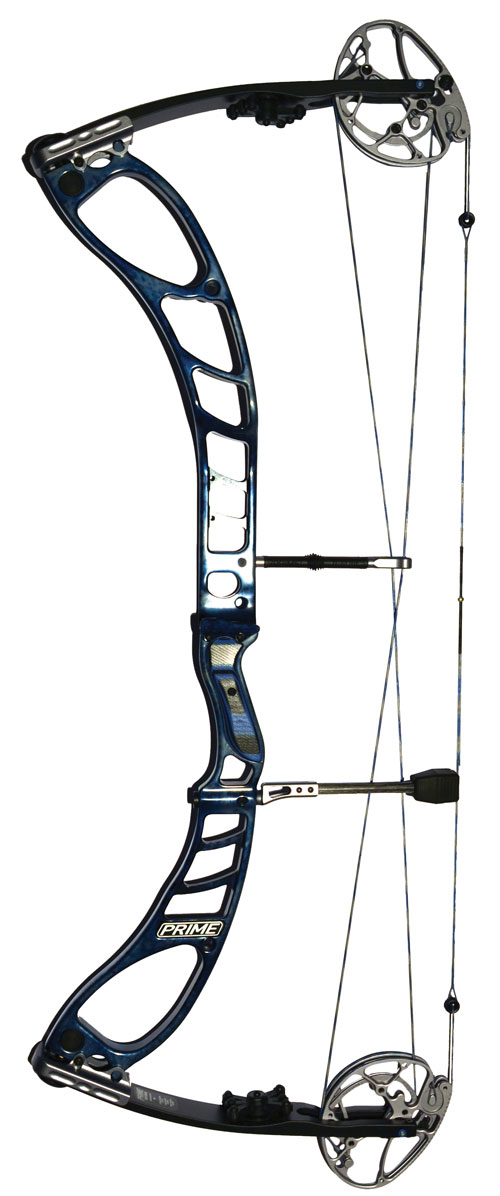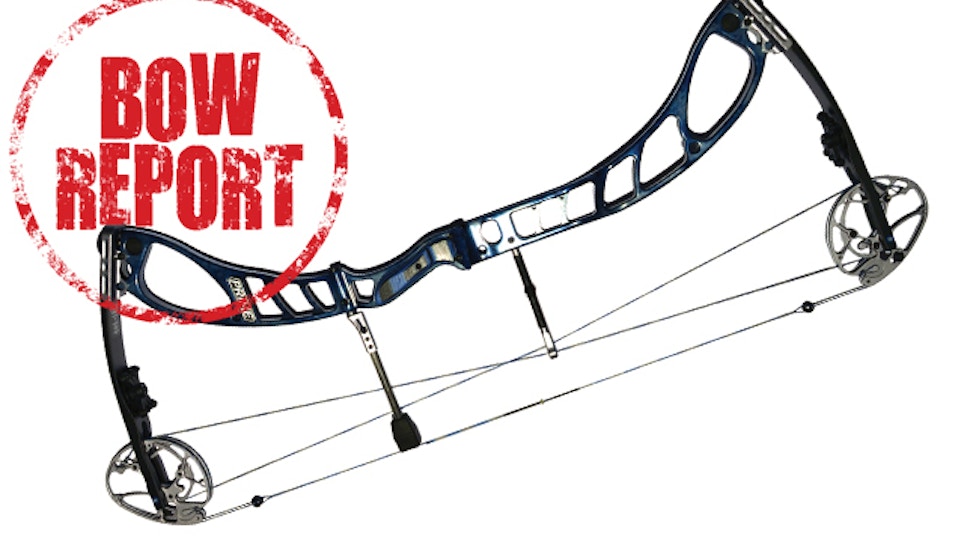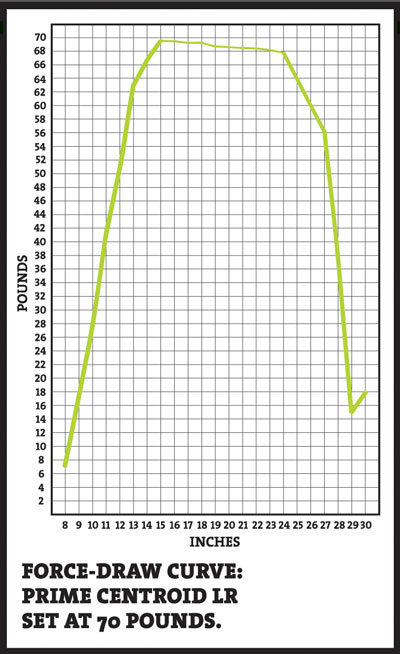G5 introduced the Prime line of bows, including the Shift and the Centroid, in 2011. The principal distinguishing feature on both bows was Prime’s Parallel Cam Technology, in which the string is effectively split, or yoked, at either end. Picture a pair of identical cams at each end of the bow, each pair sandwiched together and placed on the axle. Each split end of the string goes around one of the pair. The result is that the string is centered vertically on the bow, not offset or canted. This eliminates most inherent torque, reduces stress on limbs, and makes level nock travel (especially on the horizontal plane) more easily achieved. Prime’s Ti-Glide Titanium Flexing Cable System is, as the name suggests, a flexible cable guard that flexes in as the bow is drawn, then flexes out to provide fletching clearance as the arrow is released. This further reduces torque by reducing side load on the cables.
Prime made several significant improvements on the Centroid (as well as the Shift) for 2012. Most notably, the riser is forged 7000 series aluminum, as opposed to the industry standard 6061 T6. The 7000 series aluminum is significantly stronger and lighter, yielding a bow that is 9 percent lighter than last year’s with a riser that is both stronger and stiffer. At 4 pounds even, the Centroid is relatively light for a bow that runs 341⁄4 inches axle to axle. And, like the Martin Bengal Pro, the Centroid feels lighter than it is, possibly in part because its length creates an expectation of more weight and, possibly, because it’s also a well-balanced bow.
 The fit and finish on Prime’s bows often garners comments, and in fact it is excellent. The bow I tested is finished in Optifade and that, together with the steel-gray cams and portions of the cable guard, string suppressor, and grip, create a Bladerunner-like impression of industrial-era manufacturing and cutting-edge technology.
The fit and finish on Prime’s bows often garners comments, and in fact it is excellent. The bow I tested is finished in Optifade and that, together with the steel-gray cams and portions of the cable guard, string suppressor, and grip, create a Bladerunner-like impression of industrial-era manufacturing and cutting-edge technology.
We looked at the torque-reduction features in the Centroid’s design. The laminated limbs are a C2 cross-weft design that additionally reduces torsional stress on the limbs. That, together with this bow’s stiffer riser, makes for a very solid bow and contributes to consistency and accuracy. The grip features sideplates and is relatively narrow and exceptionally comfortable, which, I suppose, means that it fits my hand well. It’s angled back slightly in a way that encourages both contact with the heel of the hand and consistency.
Use of Gore string fibers seems to be a trend; Prime employs a proprietary blend of Gore and BCY 42X that makes for a very high-quality string. (One slight downside of the Parallel Cam Technology is that the string/cable system is more complicated. It’s worth mentioning that under Prime’s unique Shield Service Program, original owners are entitled to free strings and cables every two years for the life of the bow.)
Draw weight adjusts over a 10-pound range on the Centroid with the traditional tightening or loosening the limb bolts. A lock screw must be loosened prior to any adjustments, then retightened. Draw length is cam-specific in half-inch increments. It can be fine-tuned by moving the draw stop, which will have a slight effect on letoff. Limb dampers are placed on the inside of the bow limbs, close to the cams. While that slightly odd location keeps them out of the way when pressing the bow, they do get in the way when putting the bow in a vise.
Prime cycles its bows 100 times to let strings and parts “settle in” so that no pre tune-up shooting is necessary. (I shot a few arrows before tuning anyway.) Yet another advantage of Prime’s dual-track cam setup is that installing the rest, nock point, and even sights can be done easily by eyeballing, and that is probably the best way to start. (I did use a level to establish nock point.) For windage, simply line up the arrow with the string, which runs down the centerline of the bow. Put the sights on and line the pins up with the string and arrows. You’ll probably have to make a few adjustments, and they will probably be very minor.
Shooting The Bow
Terms like “silky-smooth” get used carelessly, so I’ll find another way to say it: There is no discernible hump, no bump, no sudden drop-off in the draw cycle of the Centroid. It simply pulls smoothly all the way to the very firm back wall. Anyone who has difficulty drawing this bow smoothly is quite simply shooting too much draw weight. That would be a shame because this is a bow that should be enjoyed. On the shot, it is virtually dead in the hand. It’s rock-steady at full draw.
I have heard more than one shooter insist that they shot very tight groups with this bow from the moment they began shooting it, and I found that to be the case for myself. If you insist on super-fast, super-light, or very compact, the Centroid may not be your favorite bow. On the other hand, the Prime Centroid is reasonably fast and reasonably light, well-balanced, easy to tune, and very pleasant to shoot. And while it is true that virtually all bows are accurate when shot from a machine or by a world-class shooter, it is also true that some bows are easier to shoot accurately than are others. By that standard, this bow is a tack-driver.
Prime Centroid LR Specs
Letoff:........................................ 80%
Brace Height:......................... 7 inches
Weight:...................................... 4 pounds
Axle-To-Axle Length:.......... 34.25 inches
Speed:......................................... 332 fps (IBO)
Options:..................................... Draw lengths 27 to 31 inches. Draw weights 50, 60, 70 pounds. Realtree AP, Optifade Forest, Optifade Open, Jet Black, Anodized Ice Blue
Suggested Retail Price:..... $1,000
Our Objective Tests
Peak Hold (Pounds):......................... 70
Weight, Full Draw (Pounds):....... 15.9
Arrow Weight....................... 385 grains......... 500 grains
Arrow Speed@70 Pounds:............. 318 fps............... 281 fps
Arrow Speed@60 Pounds:............. 301 fps............... 263 fps
Sound Level (dBA):............................. 74.5................... 67.4







